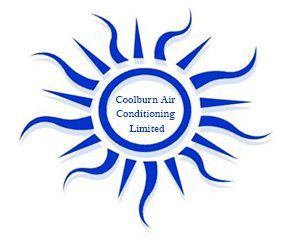
COOLBURN AIR CONDITIONING LTD
F-GAS
F-Gases and Ozone Depleting Substances
OZONE-DEPLETING SUBSTANCES (ODS)
Ozone-depleting substances (ODS) are chemicals that can damage the Earth’s ozone layer if they escape into the upper atmosphere. The ozone layer protects all living things from harmful ultraviolet radiation from the sun. ODS include HCFCs (hydro-chlorofluorocarbons) which are still used widely as refrigerants in building air conditioning and in industrial and commercial refrigeration. When it was discovered how dangerous to the ozone layer these chemicals were, these substances were largely replaced by:-
FLUORINATED GREENHOUSE GASES (F-Gases)
Fluorinated greenhouse gases (F-gases) are a family of man-made chemicals that contain fluorine. Although these gases do not damage the ozone layer like the CFCs that they have replaced, most F-gases are very powerful greenhouse gases which contribute to global warming if emitted to the atmosphere. The relevant gases that fall under the EC F-gas regulation are:-
HFCs - Hydro-fluorocarbons
Common Uses: refrigerants in refrigeration, air conditioning and heat pumps used in many applications such as industry, offices, retail, hospitality and cars.
Other Uses: aerosols, insulating foam, solvents and fire protection.
PFCs - Per-fluorocarbons
Used in semi-conductor manufacture and a few other specialised applications.
SF6 - Sulphur hexafluoride
Used in high voltage switch gear, for magnesium smelting processes and a few other specialised applications.
In addition, some manufacturing operations use F-gases in the production process, or produce F-gases as a by-product. These more specialist uses include electronics manufacture, magnesium smelting and HCFC 22 manufacture.
Impact on Stationary Refrigeration, Air Conditioning and Heat Pumps (RAC)
Users of stationary refrigeration and air conditioning systems are the largest single source of F-gas emissions, representing nearly 27% of the 2005 UK total. It is also the largest end use affected by the ozone regulation.
Users of these systems can be found across a large number of sectors including – food retail, non-food retail, office buildings, hospitality, leisure, catering, food and drink manufacture and chemical manufacturing, to name but a few. In terms of emissions, the most significant sectors are supermarket refrigeration, industrial refrigeration and buildings air-conditioning.
Operators of Equipment Containing HCFCs
HCFS are banned in the EU, but refrigeration or air conditioning equipment may contain HCFS if it was either:-
- Manufactured in the EU before 2001
- Imported from outside the EU
Follow the link below to read more.
F-Gas Regulations
The European Union's F-Gas Regulation No 517/2014 aims to reduce F-Gas emissions and specify enforcement responsibilities and penalties for non-compliance, and set out minimum qualification requirements for those who work with F-gases. All users have obligations and need to be aware of the regulations to ensure their organisation is compliant.
This Regulation replaces the 2006 Regulation and impacts anyone who:-
- Manufacturers, uses or services equipment that contains F-Gases, like refrigeration and air conditioning systems, solvents or aerosols.
- Produces or wholesales F-Gas.
- Imports or exports F-Gas, or equipment containing F-Gas, to or from the EU.
Coolburn Air Conditioning Ltd
actively promotes the design and installation of systems containing the refrigerant R32 to reduce the effects on the planet of higher Global Warming Potential (GWP) Refrigerants.
